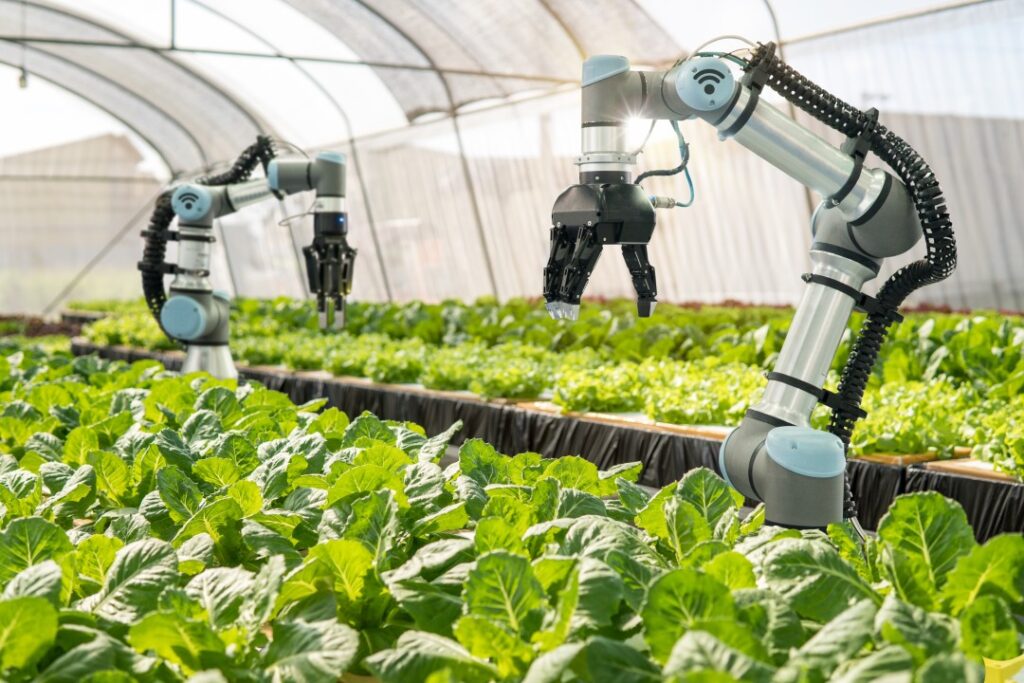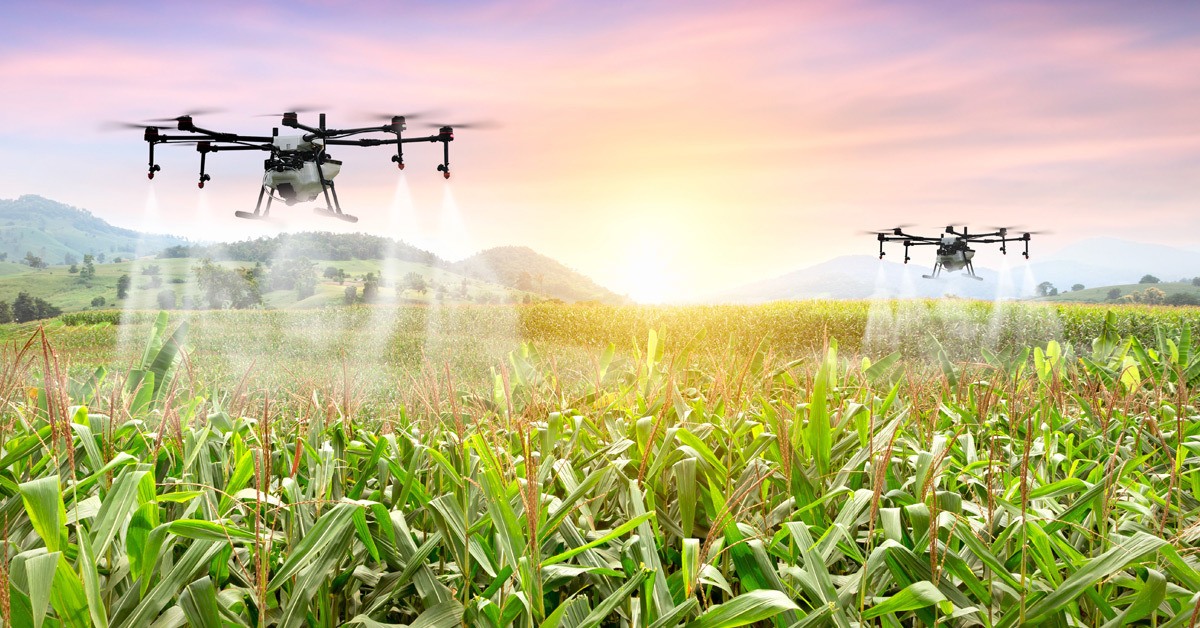Agriculture has undergone a remarkable transformation, with technology playing a crucial role in improving productivity, efficiency, and sustainability. From greenhouse automation to robots and autonomous machines, these advancements are redefining farming practices. Here are the best 9 technologies used in agriculture today, showcasing their impact on modern farming. Best 9 Technologies Used in Agriculture
Greenhouse Automation
Greenhouse automation optimizes controlled-environment agriculture, allowing farmers to grow crops year-round efficiently. Automated systems regulate temperature, humidity, and lighting to create ideal growth conditions. IoT sensors and advanced software continuously monitor these factors, enabling real-time adjustments without manual intervention.
Smart irrigation systems and automated nutrient dosing ensure precise water and fertilizer application, leading to higher yields and reduced resource waste. Advanced AI-powered greenhouses even predict plant growth patterns, making farming more efficient and sustainable.
Crop Management
Crop management technologies have revolutionized how farmers monitor and maintain their fields. Tools like drones, satellite imagery, and soil sensors provide real-time data on soil health, moisture levels, and crop growth. Farmers use this data to make informed decisions about planting, watering, and fertilizing.
Mobile apps and platforms offer additional support, delivering insights about weather patterns, pest infestations, and disease risks. These technologies help farmers improve resource allocation, boost crop yields, and minimize environmental impact.

Cattle Monitoring and Management
Modern livestock farming benefits significantly from cattle monitoring and management systems. Wearable devices, such as biometric sensors and GPS trackers, allow farmers to monitor their animals’ health, location, and activity. These tools help detect health issues early, improving animal welfare and reducing losses.
Automated feeding systems and milking robots enhance productivity, while herd management software provides insights into breeding cycles, milk yields, and overall herd performance. This technology streamlines operations, making livestock farming more profitable and efficient.
Precision Farming
Precision farming, also known as precision agriculture, utilizes data-driven approaches to optimize farming practices. Using GPS, sensors, and machine learning, this technology allows farmers to apply water, fertilizers, and pesticides with pinpoint accuracy.
Precision farming minimizes waste, reduces costs, and promotes environmental sustainability. For example, GPS-guided tractors ensure accurate planting and spraying, while soil mapping and variable-rate technology (VRT) focus resources on specific field areas. These innovations increase yields while preserving natural resources.
Agricultural Drones
Drones have become essential in agriculture for their versatility and efficiency. Equipped with high-resolution cameras and sensors, drones provide aerial views of fields, allowing farmers to assess crop health, detect pest infestations, and evaluate irrigation effectiveness.
In addition to monitoring, drones are used for planting seeds and applying pesticides. They can cover vast areas in less time than traditional methods, saving labor and improving precision. Thermal imaging drones also detect water stress in plants, helping farmers intervene proactively to ensure optimal growth.
Predictive Analytics for Smart Farming
Predictive analytics is reshaping agriculture by empowering farmers to make proactive, data-driven decisions. By analyzing historical data, weather forecasts, and current field conditions, predictive models forecast yields, pest outbreaks, and optimal planting times.
AI-driven platforms combine data from sensors, satellites, and farm equipment to provide actionable insights. For example, predictive analytics might suggest irrigation based on upcoming weather and soil moisture levels. This technology reduces risks, enhances resource use, and boosts profitability, making it indispensable for modern farming.
End-to-End Farm Management Systems
End-to-end farm management systems (FMS) integrate all farming operations into a single platform. These systems enable farmers to plan, monitor, and analyze every aspect of their farm, from crop production to financial management.
FMS features include inventory tracking, compliance reporting, and workforce management. Cloud-based solutions make these systems accessible from anywhere, enabling seamless collaboration and decision-making. By providing real-time insights, FMS helps farmers optimize workflows, reduce costs, and increase efficiency.
Robots and Autonomous Machines

Robots and autonomous machines are revolutionizing agriculture by automating labor-intensive tasks. Autonomous tractors, for instance, can plow, plant, and harvest with minimal human intervention. These machines use GPS, AI, and advanced sensors to perform tasks with exceptional precision.
Robots are also utilized for fruit picking, weed removal, and crop monitoring. Machine vision allows these systems to identify ripe produce and harvest it efficiently, reducing labor dependency. As technology advances, robots are becoming increasingly affordable and accessible, further enhancing agricultural productivity.
Smart Irrigation Systems
Smart irrigation systems are crucial for optimizing water use in agriculture. These systems use soil moisture sensors, weather data, and plant water requirements to automate irrigation schedules, ensuring crops get the right amount of water at the right time.
Remote control through mobile apps offers flexibility and convenience, while automated systems prevent overwatering and reduce water wastage. In water-scarce regions, smart irrigation supports sustainable farming practices, helping farmers maintain yields while conserving resources.
The Impact of Agricultural Technologies
The integration of technology in agriculture has driven remarkable improvements in productivity, efficiency, and sustainability. Greenhouse automation, precision farming, drones, and predictive analytics have transformed farming into a data-driven industry. These technologies help farmers meet growing global food demands while reducing environmental impact.
Conclusion
The best technologies used in agriculture, including greenhouse automation, crop management, cattle monitoring, precision farming, agricultural drones, predictive analytics, end-to-end farm management systems, robots, and smart irrigation systems, are reshaping the industry. These advancements empower farmers to improve yields, reduce costs, and adopt sustainable practices. As agricultural technology continues to evolve, it will play a vital role in feeding the world’s growing population and safeguarding natural resources for future generations.





